In Germany, just about three kilometres across the Dutch border the Fürsten zu Salm-Salm have their main residence: Wasserburg Anholt (moated castle). For years this castle has been on my list of castles I once wanted to visit. Some weeks ago I had another look how to get there. Well, you either go by train to the Dutch places Doetinchem or Winterswijk and cycle to Anholt, or take the train into Germany and then take a bus (that of course only runs every few hours). I asked Mo from History of Royal Women, who doesn’t live too far away, if she’d like to come with me, and we chartered another royalty friend of ours and his car for more company. He collected us from the railway station in Doetinchem, and it turns out he lives just about five kilometres from Anholt. By car it was of course much easier to get to Anholt. We had a great day and the weather was much better than the weather reports said, at least in this part of the Netherlands/Germany.
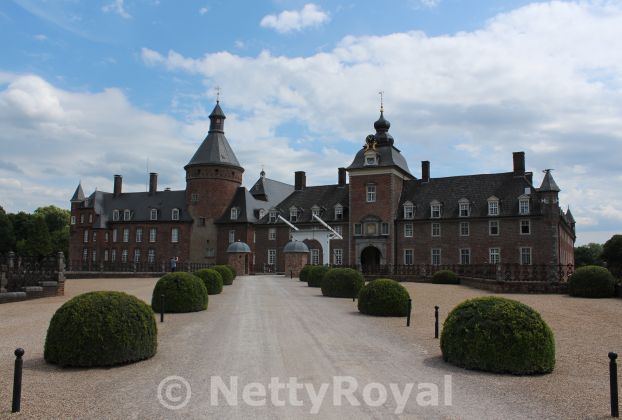
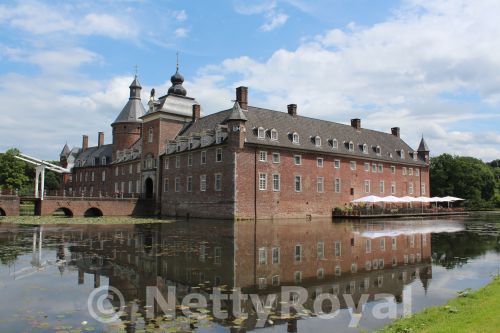
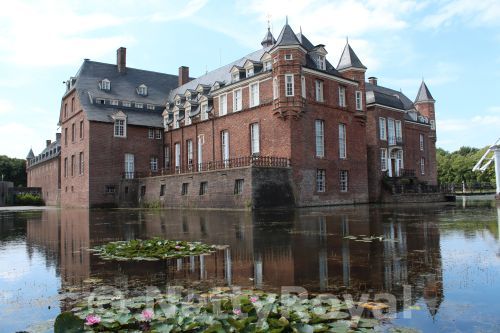
Anholt was mentioned first in 1169. At the time the land was owned by the Lords of Sulen, who were ordered to build a fortress to protect the area. At first only a thick tower was built, and already in the early 14th century there was a courtyard surrounded by buildings. When the Lords of Sulen became extinct in 1402 the castle became the property of the Lords of Bronckhorst-Batenburg, who extended the castle even further. In 1645 the Salm family acquired the castle through the marriage of Leopold Philipp Carl Fürst zu Salm-Neufville (1619/20-1663) with the heiress Maria Anna van Bronckhorst-Batenburg. Anholt wasn’t their most important property. It wasn’t until 1700 that Fürst Carl Theodor Otto (1645-1710) had the existing castle turned into a baroque castle. Also the interior was decorated with precious furniture and art. His son After 1705 Fürst Ludwig Otto (1674-1738) had the geometric gardens constructed. He was the only one who regularly stayed at the castle.
During the French revolution the Fürsten zu Salm lost a lot of property, and in the early 19th century Anholt became important as residence for the family. Fürst Wilhelm Florentin (1786-1846) decided to construct an English landscape park. Fürst Alfred II (1846-1923) had the main castle extended with among others a new dining room. Unfortunately at the end of World War II, on 19 March 1945, three quarter of the castle was destroyed by bombs. The family managed to escape in time and took residence at the nearby House Rhede near Bocholt. Fürst Nikolaus Leopold, who died in 1988, made it his life work to build up Anholt again. In 1954 it was decided the forecourt (the former stables) would be used as a hotel, and the main castle as museum. It took 40 years and 15 Million D-Mark to rebuild and restore the castle and reconstruct the gardens. 12 Million D-Mark was paid by Fürst Nikolaus Leopold himself. He wouldn’t live long enough to see the final results. Fürst Carl Philipp and his wife finally took up residence at Anholt again in 2003. The family lives in the northern wing, like in old days.


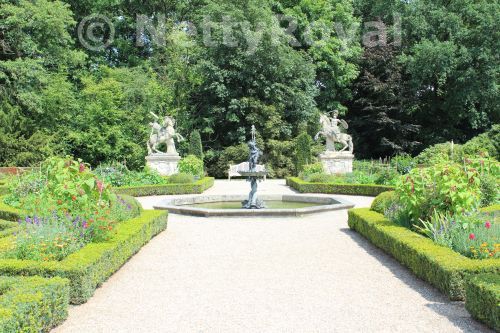
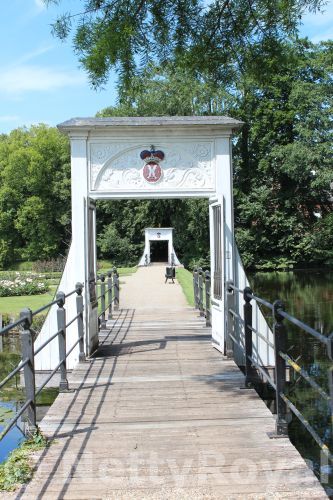
In 1966 the museum opened its doors. It is open from 1 May to 30 September between 11am and 5pm on Tuesday until Sunday. From 1 October to 30 April the castle is open only on Sundays between 1pm and 5pm. Visitors can only visit the castle during a tour that takes place every hour between 11am and 4pm. A longer tour starts at 1pm, highlighting the paintings, which I fear isn’t about the family portraits, but about the paintings on the top floor. The park is open daily all year long. No photography is allowed inside the castle. After the tour you can get into the kitchen and into the tower, but there isn’t much more to see there, apart from a coin collection and some arms.
The tour starts in the library, that was already founded around 1450. I even discovered some genealogy books. Surprisingly it seems the tour is only being held in German, considering that many visitors are Dutch, as the castle is very close to the border. The tour took about 50 minutes and I think something more could have been told, or maybe we were just not lucky with our guide. You’ll among others will see the dining room, the stateroom and of course the 17 metres long knight’s hall. The last room is still being used by the family for festive events. I found this room the most impressive one, as it has portraits of family members on the walls, from older to newer portraits. We saw lots of paintings, furniture, tapestries, and hardly had enough time to have a good look. We decided to walk around the castle. But as we had more plans for the day, we skipped the park itself.
